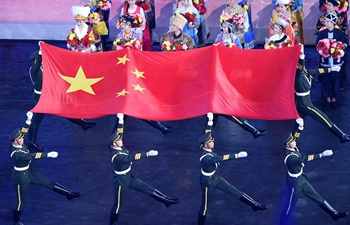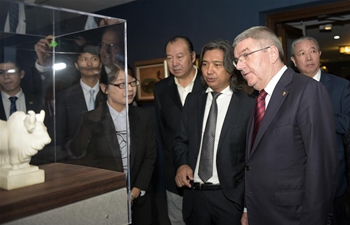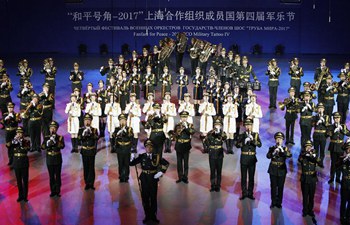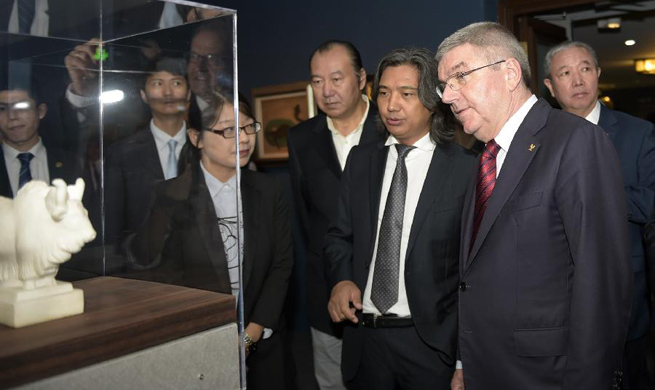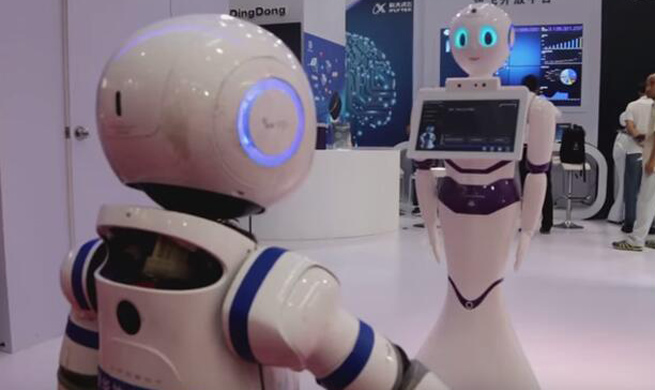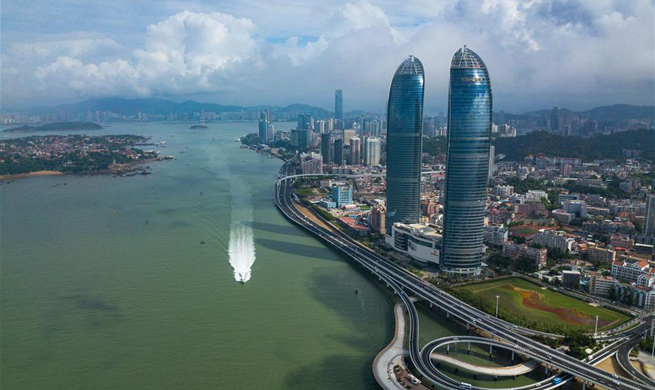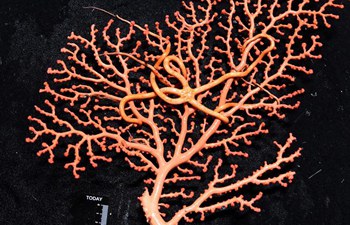by Maria Spiliopoulou, Valentini Anagnostopoulou
ATHENS, Aug. 27 (Xinhua) -- Herakleidon museum opposite the Acropolis hill offered this summer to visitors a unique journey to Greek seafaring from antiquity to modern times, showcasing through models of ships and nautical instruments Greeks' achievements in a field which is regarded as an integral part of their identity.
As the curtain of the exhibition "Voyage: Greek shipbuilding and seafaring" falls this week in Athens, the museum prepares to host another significant exhibition of ancient Chinese technology in autumn, Eleni Nomikou, the museum's director told Xinhua.
"Seafaring has formed Greeks' character. The spirit of Ulysses still exists in Greeks today. Shipping was and still remains their basic activity. The sea and shipping in particular offer Greeks wealth, vision and a future," Nomikou said.
"Greek ships did not carry only products, but also knowledge and culture throughout our history. Thanks to these vessels Greeks travelled the world, enriched their knowledge and used it to create on this land and give birth to the Greek civilization," she stressed.
A total of 35 handmade wooden models of vessels, complemented with works of art, maps, drawings and video projections narrate the history of Greek seafaring from prehistoric times to the middle of the 20th century.
Dimitris Maras, a mechanical engineer and model shipbuilder, who has studied in depth the shipbuilding history of Greece, as well as the construction of ship models over the past three decades, created the replicas with authentic materials, based on naval architectural drawings, following traditional methods, Nomikou explained.
Each section of the exhibition which was held under the auspices of the Hellenic Navy General Staff presents an important stage in the history of Greek seafaring.
The model of a vessel of the Minoan civilization which flourished from 2600 to 1100 BC, was built based on a mural unearthed on Santorini island, while for the replica of the early 19th century frigate "Hellas" Maras went through naval architectural designs of her sister ship, the US Navy's frigate USS Hudson.
The frigate "Hellas" was built in the U.S., arrived in Greece in 1826 and played a decisive role during the last years of the War of Independence against the Turks, as well as the steamship "Karteria" whose model was also put on display.
"Karteria", bought from Britain in 1825, was the first steamship of the Greek fleet and is considered the first steamship worldwide to have engaged in sea battles.
Christos Papamichalis was among the visitors who took a closer look at the replicas last week.
"I am a pensioner and I always liked creating ship models. Currently I am building small models of ships with driftwood and I wanted to check out the techniques used, how he makes the anchors, the ropes, the masts and the sails," he told Xinhua.
Among the highlights of the exhibition was also an interactive model of the Antikythera Mechanism, a complicated device dating back to the 2nd- 1st century BC which was recovered in 1901 from a wreck off the island of Antikythera in the Aegean Sea.
During the exhibition visitors had the chance to observe the model of this ancient Greek analogue computer, which was created by Markos Skoulatos, a Physics expert, in operation.
As the Voyage exhibition is set to travel to Cyprus and the US, Herakleidon museum is getting ready to welcome for first time in Athens a remarkable exhibition of the technological and scientific achievements of the ancient Chinese civilization.
"The museum has signed a significant agreement with Beijing's China Museum of Science and Technology (CSTM) for the exchange of two exhibitions of ancient technology," Nomikou said.
"Ancient Greek technology will travel to China in October this year, while ancient Chinese technology will be presented in Herakleidon museum in less than a month. It will stay here for about 8 months giving the unique opportunity to Athenians, and not only Athenians, to see the achievements of Chinese people from antiquity to today in the fields of technology and science," she explained.
The deal was sealed as the two countries celebrate in 2017 the China-Greece Cultural Exchanges and Cultural Industry Cooperation Year as part of efforts to further enhance bilateral ties.
Through models and demonstrations over the next few months at Herakleidon museum visitors will have the opportunity to get acquainted with pioneering Chinese inventions covering a broad scientific spectrum from astronomy, mechanical engineering and seismography to papermaking, printing and weaving techniques.
In the meantime, CSTM will host an exhibition which will include reproductions of ancient Greek ships, metalcraft machinery, automation models and measuring instruments.
"The two great ancient civilizations, the Chinese and Greek, meet each other through their differences. It is so exciting when one discovers how two different civilizations, two different ways of thinking which progressed in parallel and did not meet essentially in antiquity, how through all this show man's effort to create and develop when facing the same issues," Nomikou noted.
The exhibition will also include a section on Chinese seafaring. "We will see their efforts in shipbuilding, how different were their vessels compared to the ships constructed by other people and how close they were regarding the key point: man's thirst to travel. This is eventually the common element we see regardless of the different ways and techniques used," Nomikou underlined.
Herakleidon Museum, founded by Paul and Anna- Belinda Firos, has been bringing art, education, and culture to the general public since 2004, providing educational programs for students and adults, as well as exhibitions of art and popularized science.





